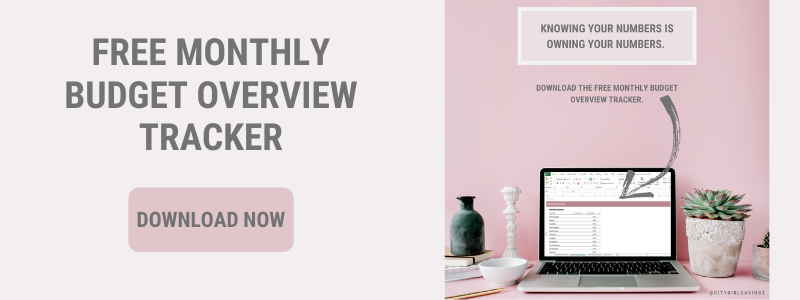There’s no better way to determine if you’re sticking to your budget and on track with your money goals than by tracking your spending. In addition to tracking your spending, you’ll want to make sure you organize your spending in a way that gives you the data you need to make adjustments if things aren’t going according to plan.
If you’ve never tracked your spending before, you’re not alone. They don’t teach this stuff in school and there’s no set way to go about getting your spending organized. Don’t let that deter you! When I started tracking my spending, the game totally changed. Then, I started teaching my clients how to track and organize their spending, and the results were amazing! Get ready to be a tracking pro because I’m sharing 5 easy ways to organize your spending for success.
5 Easy Ways to Organize Your Spending
#1 Find a Tracking Routine
When it comes to tracking your spending, you have options! You can use an app (like EveryDollar or Rocket Money). You can use a software program (like Quicken or YNAB). You can physically write your spending. Or, you can use an excel spreadsheet.
Whatever tracking method you decide to use, you’ll want to establish a routine around it. When you use an app or software, your routine will be reviewing it on a specific cadence to make sure everything is tracked appropriately. If you decide to track via an excel spreadsheet or physical writing, you’ll want to establish a cadence to make sure you’re looking at your account activity and getting it tracked.
Before you can organize your spending successfully, you need to have your method of tracking determined and your routine for making sure tracking is done correctly.
#2 Allocate Time Every Week to Review Your Spending
If you’ve never tracked your spending before, I recommend a weekly cadence for reviewing or tracking. When you’re just starting out, this activity may take some time. You’ll need to get used to tracking, categorizing, and reviewing your spending activity. That’s okay. Just like anything, the more you do it, the more efficient you will be.
Find a set time every week to review your spending and make sure everything is tracked correctly. Sunday morning is a good time, since you’ll be closing out the previous week. There’s no right day or time though, you just want to make sure you’re doing this weekly.
#3 Organize Your Monthly Spending by Category
The beauty about apps is that they organize your spending for you, the only thing is they’re not always accurate. I’ve had plenty of clients use apps and software, only to complain that they don’t always get the categories right. This is why your weekly spending review is so important. If you don’t properly categorize your spending, you’re not getting an accurate picture of what’s happening with it.
If you track via a spreadsheet or physical writing, you can categorize as you track. Not only do I use a spreadsheet to track my own spending, but I require my financial coaching clients to do the same. Not only can we see how much is being spent, but we can see exactly what the money is being spent on. This information is so important for making positive changes.
#4 Use a Spreadsheet to Monitor Spending Changes
Whether you use a spreadsheet to track your spending or not, you can always leverage the functionality of spreadsheets to see your progress month over month, among other things. Take the information from your app or notebook and input it into your spreadsheet every month. This can help you monitor changes in your spending behavior. You’ll be able to easily see if things are getting better or worse. With that information, you can switch things up or keep doing what you’re doing!
#5 Leverage Tools to Get a Monthly and Yearly Total for Spending
The final way to organize your spending to your benefit is by leveraging tools to help you get a monthly or yearly view of your spending. Most credit card companies are great about this. They give you an annual spending summary, broken down by category, to see how your money was spent throughout the year.
Having a view that gives you your monthly and annual spending totals helps you get clear on what happened with your money in that timeframe. You can quickly see your areas of opportunity, areas of success and areas you weren’t too focused on. Once again, having this information can help you move forward the best way possible.
Related: 5 Ways to Track and Organize Your Spending
Steps 1 and 2 above are the most important. You can’t organize your spending if you have nothing tracked. Plus, if you don’t set aside consistent time every week to track and organize your spending, the activity will become extremely daunting and less likely to get done. Once you have your routines set, the rest of the organizational process is a breeze! Before you know it, you’ll be an expert at tracking your spending. Do you currently track your spending? What do you do with the data after it’s tracked? Drop a comment below to share!
-Raya
The CGS Team







1 thought on “5 Easy Ways to Organize Your Spending”
I use pen and paper to track my spending. But I have ADHD so I have to track my spending daily. I also have multiple accounts, so I use a separate tracker for each account. Some accounts are only used 2 times a month and my cash, and checking accounts are daily, and savings is tracked biweekly. If I get to far behind, like 3 days or more, I loose my motivation and I get frustrated because of it.